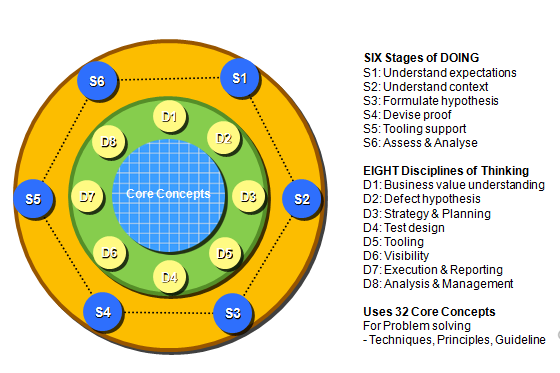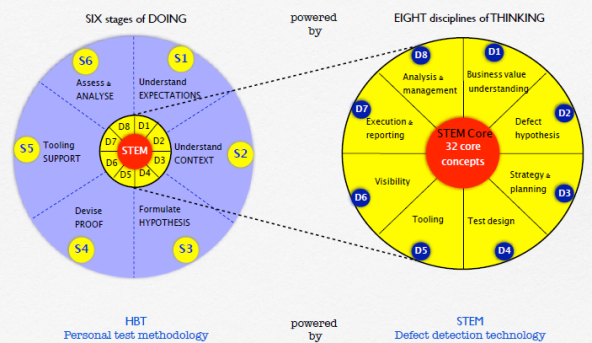The act of validation in HyBIST consists of “SIX Stages of DOING”. It commences with first two stages focused on a scientific approach to understanding of the customer expectations and the context of the software. One of the key outcomes of the first two stages is “Cleanliness Criteria” that gives a clear understanding of the expectation of quality. In the third stage, the Cleanliness Criteria and the information acquired in the first two stages are used to hypothesize potential types of defects that are probable in the software. The fourth stage consists of devising a proof to scientifically ensure that the hypothesised defects can be indeed be detected cost-efficiently. The fifth stage focuses on building the tooling support needed to execute the proof. The last stage is about executing the proof and assessing if the software does indeed meet the Cleanliness Criteria.

